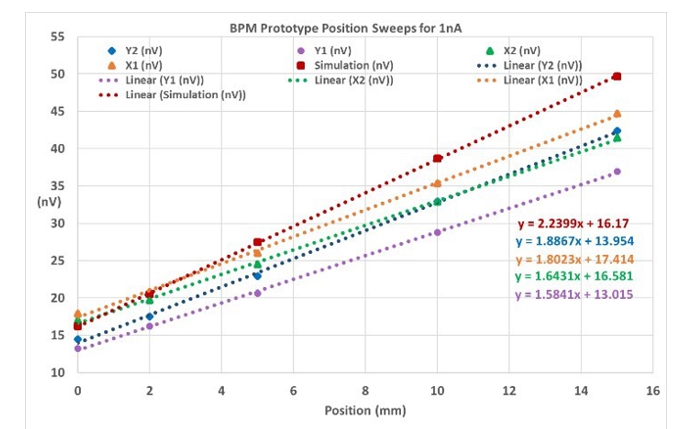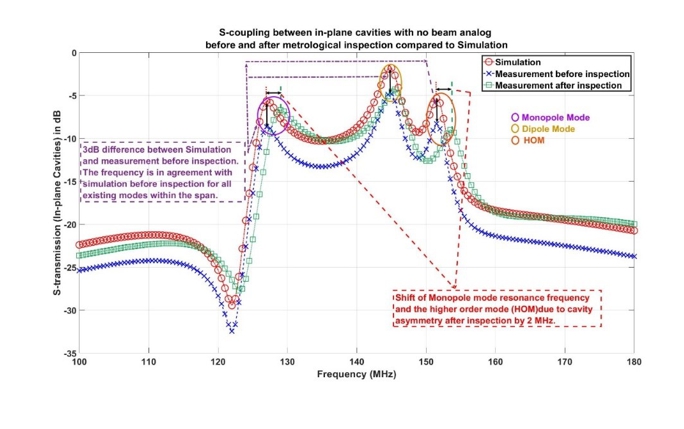Non-invasive measurement of beam intensity

Low proton beam intensities (0.1-40 nA) are used for the treatment of tumours at the PROSCAN facility at the Paul Scherrer Institut (PSI). A cavity resonator using four quadrants operating in a dipole mode resonance has been developed to accurately measure beam position at such low intensities.
The TM110 resonance frequency of 145.7 MHz was matched to the second harmonic of the beam pulse repetition rate of 72.85 MHz. The code HFSS (High Frequency Structural Simulator) allowed optimizing the geometry of the beam position monitor and to analyze important parameters such as the pickup position, dielectric material choice and dimensions, etc.

S-transmission between in-plane cavities in the absence of beam analog before and after mechanical reassembly compared to Simulation.
A comparison between test bench measurements and simulation results gave overall good agreement. The measured position and signal sensitivity were found to be limited by the noise. It was possible to derive a position signal at beam intensities down to 10 nA .
In a paper presented at the world’s largest particle accelerator conference, IPAC, OMA Fellow Sud Srinivasan and co-authors discuss their findings and methods to increase the sensitivity. They show that a dipole cavity resonator is a very promising candidate for a non-invasive beam position diagnostic at medical facilities.
Full details can be found in the IPAC proceedings:
S. Srinivasan, et al., Quadrated Dielectric-Filled Reentrant Cavity Resonator as a Proton Beam Position Diagnostic, Proc. IPAC, Melbourne, Australia (2019).